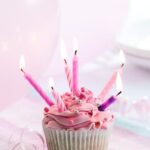Butter icing is a crucial component in cake decorating, adding both flavor and aesthetic appeal to any baked creation. Whether you’re crafting a simple birthday cake or a elaborate wedding confection, knowing how to make butter icing for cake decorating is essential. This creamy and versatile frosting can elevate the look and taste of your cakes, making them truly memorable.
The beauty of butter icing lies in its simplicity and ability to be customized to suit any flavor profile or design. By following a few key steps and using the right ingredients, you can create a smooth and luscious buttercream that is perfect for piping, spreading, or sculpting onto your cakes. From classic vanilla buttercream to rich chocolate ganache frosting, the possibilities are endless when it comes to butter icing for cake decorating.
In this article, we will walk you through the process of making butter icing from scratch, including a detailed list of ingredients needed and helpful tips for achieving the perfect consistency and flavor. Whether you’re a novice baker looking to improve your skills or a seasoned pro seeking new inspiration, mastering the art of butter icing will take your cake decorating projects to the next level.
Ingredients Needed for Making Butter Icing
To create delicious and smooth butter icing for cake decorating, you will need a few simple ingredients that are often found in your kitchen. Here is a list of items you will need:
- 1 cup of unsalted butter, at room temperature
- 4 cups of powdered sugar (also known as confectioner’s sugar)
- 2 teaspoons of vanilla extract for flavoring
- 2-4 tablespoons of heavy cream or milk for adjusting the consistency
Once you have gathered all the necessary ingredients, you are ready to start making butter icing from scratch. Follow the step-by-step guide below to achieve a perfect texture and taste for your cakes:
- In a mixing bowl, beat the softened butter using an electric mixer until it becomes creamy and smooth.
- Gradually add the powdered sugar into the bowl, mixing on low speed to avoid creating a mess.
- Add vanilla extract for flavor and continue mixing until well combined.
- If the icing is too thick, incorporate heavy cream or milk one tablespoon at a time until reaching your desired consistency.
By following these steps with precision, you can easily create a delightful butter icing that is perfect for decorating any cake. Experiment with different variations such as adding cocoa powder for chocolate butter icing or using almond extract for a unique flavor twist. With practice and patience, you will master the art of making delicious butter icing for all your cake decorating projects.
Step-by-Step Guide on How to Make Butter Icing From Scratch
Butter icing, also known as buttercream frosting, is a crucial element in cake decorating. It not only adds sweetness but also helps in creating a smooth and beautiful finish to your baked creations. Learning how to make butter icing from scratch can elevate your cake decorating skills and allow you to personalize the flavor and consistency of the frosting according to your preferences.
To make butter icing for cake decorating, you will need a few basic ingredients. The main components include unsalted butter, powdered sugar (also known as confectioners’ sugar), vanilla extract or other flavorings, and a pinch of salt. These ingredients come together to create a rich and creamy frosting that can be easily piped onto cakes or cupcakes to achieve stunning decorations.
One simple method for making butter icing involves creaming softened butter until it becomes light and fluffy. Gradually add sifted powdered sugar, along with the salt and vanilla extract, until the mixture reaches a smooth and spreadable consistency. Adjust the amounts of sugar and liquid ingredients as needed to achieve the desired thickness for piping or spreading on your cakes. Experimenting with different flavor extracts or incorporating food coloring can also add variety to your butter icing repertoire.
Tips for Achieving the Perfect Consistency and Flavor of Butter Icing
Choosing the Right Ingredients
One crucial factor in achieving the perfect consistency and flavor of butter icing is using high-quality ingredients. Starting with fresh, unsalted butter will make a significant difference in the taste and texture of your icing.
It is essential to allow the butter to come to room temperature before starting the icing-making process, as this will make it easier to cream with the other ingredients. Additionally, using pure vanilla extract instead of artificial flavors can enhance the overall flavor profile of your butter icing.
Consistency Is Key
To achieve that smooth, spreadable consistency for your butter icing, it’s important to gradually add your powdered sugar while mixing. Start by adding small amounts at a time and mix on low speed until fully incorporated. If your icing is too thick, you can adjust the consistency by adding a little milk or cream until you reach your desired texture. On the other hand, if your icing is too thin, simply add more powdered sugar until it thickens up.
Enhancing Flavor
If you’re looking to elevate the taste of your butter icing, consider experimenting with different flavor extracts or additions. For example, you can add a hint of almond extract for a unique twist or mix in cocoa powder for a chocolate-flavored icing.
Other options include adding citrus zest for a refreshing touch or incorporating espresso powder for a coffee-infused icing. Don’t be afraid to get creative and tailor the flavor of your butter icing to complement the cake you are decorating.
These tips will help you master not only the consistency but also the flavor of your butter icing for cake decorating. Experiment with different ingredients and techniques to find what works best for you and enjoy creating beautifully decorated cakes with delicious buttercream frosting.
Different Variations of Butter Icing Recipes to Try
When it comes to cake decorating, butter icing plays a crucial role in adding flavor and aesthetic appeal to your creations. There are several variations of butter icing recipes that you can try to elevate the taste and look of your cakes. Whether you prefer a classic buttercream or want to experiment with different flavors, there is a recipe out there for everyone.
American Buttercream
One of the most popular variations of butter icing is American Buttercream. This simple recipe involves mixing together butter, powdered sugar, vanilla extract, and a little milk until smooth and creamy. American Buttercream is sweet, rich, and perfect for piping decorations onto cakes and cupcakes.
Swiss Meringue Buttercream
For a lighter and less sweet option, Swiss Meringue Buttercream is a great choice. This recipe involves whisking egg whites and sugar over a double boiler until soft peaks form, then gradually adding softened butter until light and fluffy. Swiss Meringue Buttercream has a silky texture and pairs well with fruity or floral flavors.
Cream Cheese Frosting
If you’re looking for a tangy twist on traditional butter icing, Cream Cheese Frosting is an excellent choice. By combining cream cheese, butter, powdered sugar, and vanilla extract, you can create a creamy frosting with a subtle tanginess that complements red velvet cakes or carrot cakes perfectly.
Experimenting with different variations of butter icing recipes can open up a world of possibilities for your cake decorating projects. Whether you stick to the classic American Buttercream or venture into more complex recipes like Swiss Meringue or Cream Cheese Frosting, each variation brings its own unique flavor profile and texture to enhance your creations. So why not step out of your comfort zone and try something new for your next baking adventure?
Troubleshooting Common Issues When Making Butter Icing
When making butter icing for cake decorating, it is not uncommon to encounter some issues along the way. It can be frustrating when your icing doesn’t turn out the way you expected, but with a few troubleshooting tips, you can improve your skills and create delicious buttercream that is perfect for decorating cakes.
One common issue when making butter icing is when the texture becomes too runny or watery. This can happen if the butter was too soft or if too much liquid was added to the mixture. To fix this problem, try adding more powdered sugar a little at a time until the desired consistency is reached. You can also refrigerate the icing for a short while to help it firm up.
Another issue that may arise is when the butter icing becomes too stiff or dry. This could be due to using too much powdered sugar or not adding enough liquid to the mixture. To remedy this situation, try incorporating a small amount of milk or cream to soften the icing. Gradually mix in the liquid until you achieve a smoother and more spreadable consistency.
Lastly, air bubbles in your butter icing can also be a source of frustration when decorating cakes. These bubbles can create an uneven surface on your cake and affect its overall appearance. To eliminate air bubbles, gently tap the bowl of icing on your countertop to release any trapped air. You can also use a spatula to smooth out any bubbles as you apply the icing to your cake.
| Troubleshooting Tips | How to Address |
|---|---|
| Runny Icing | Add more powdered sugar gradually or refrigerate briefly |
| Stiff Icing | Slowly add milk or cream to soften the texture |
| Air Bubbles | Gently tap bowl on countertop and smooth out bubbles with spatula |
Creative Ways to Use Butter Icing for Cake Decorating
Butter icing, also known as buttercream frosting, is a versatile and essential component in cake decorating. It not only adds a delicious finishing touch to cakes but also serves as a smooth base for various decorations. From simple swirls to intricate designs, butter icing can elevate the look of any cake.
Here are some creative ways to use butter icing for cake decorating:
- Piping Techniques: Use a piping bag fitted with different tips to create elegant borders, flowers, rosettes, or writing on your cakes. Practice different techniques such as shell border, star tip swirls, or ruffles to add visual interest to your creations.
- Ombre Effect: Create a stunning ombre effect by using multiple shades of butter icing. Start with a dark color at the base of the cake and gradually transition to lighter shades as you move towards the top. Blend the colors together for a seamless gradient.
- Textured Designs: Experiment with texturing tools like combs, spatulas, or brushes to add dimension and texture to your butter icing decorations. Create patterns like basket weave, wood grain, or waves for a unique and eye-catching finish.
In addition to these techniques, you can also incorporate other elements such as edible flowers, sprinkles, edible glitter, or fondant accents to enhance the look of your cakes further. Don’t be afraid to get creative and try out different ideas when using butter icing for cake decorating – the possibilities are endless.
Remember that practice makes perfect when it comes to mastering the art of cake decorating with butter icing. So don’t be discouraged if your first attempts aren’t flawless – keep experimenting and honing your skills until you achieve the desired results. With patience and creativity, you can create beautifully decorated cakes that will impress your friends and family.
Conclusion
In conclusion, mastering the art of making butter icing for cake decorating is a valuable skill that can elevate the presentation and taste of your baked creations. By understanding the importance of butter icing, familiarizing yourself with the necessary ingredients, and following a step-by-step guide, you can create delicious and visually appealing decorations for your cakes.
Achieving the perfect consistency and flavor of butter icing may require some practice and patience, but with the right tips and techniques, you can ensure that your decorations turn out beautifully every time. Whether you prefer a classic buttercream or want to experiment with different variations of butter icing recipes, there are endless possibilities to explore when it comes to enhancing your cakes.
So next time you’re planning a cake decorating project, don’t hesitate to try making your own butter icing from scratch. With creativity, dedication, and a willingness to learn from any troubleshooting issues that arise, you’ll soon be on your way to creating stunning desserts that will impress both visually and in taste. Enjoy the process and have fun experimenting with different ways to use butter icing in your cake decorating endeavors.
Frequently Asked Questions
What Is the Best Buttercream for Cake Decorating?
The best buttercream for cake decorating is often Swiss meringue buttercream. This type of buttercream is silky smooth, stable, and holds its shape well when piped onto cakes or cupcakes. It provides a clean canvas for intricate designs and can easily be colored to match any theme.
How Do You Make Buttercream Thicker for Piping?
To make buttercream thicker for piping, you can adjust the consistency by adding more powdered sugar to the mixture. This will help stiffen the buttercream, making it easier to pipe intricate designs or create more defined shapes on your baked goods. However, be careful not to add too much powdered sugar, as this can make the frosting too sweet.
What Is the Formula for Buttercream Frosting?
The formula for buttercream frosting typically involves combining softened butter, powdered sugar, vanilla extract, and a small amount of milk or cream. The ratio of butter to powdered sugar can vary depending on personal preference and the desired consistency of the frosting.
Adding a pinch of salt can help balance out the sweetness of the frosting and enhance its flavor profile. Overall, experimenting with different ratios and ingredients can help you find the perfect formula for your preferred buttercream frosting.

Welcome to my blog about home and family. This blog is a place where I will share my thoughts, ideas, and experiences related to these important topics. I am a stay-at-home mom with two young children. I hope you enjoy reading it! and may find some helpful tips and ideas that will make your home and family life even better!





